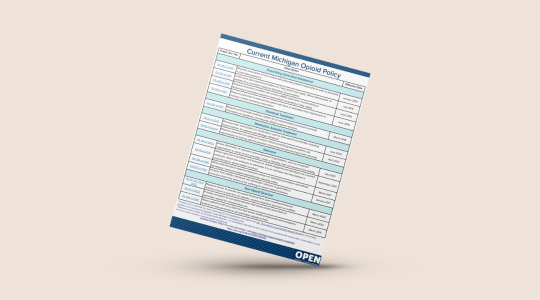Explore the current policies related to opioids in Michigan.

_____________________________________________________________________________
Cite this work:
OPEN: Overdose Prevention Engagement Network (2024). Current Michigan Opioid Policy. Retrieved from https://doi.org/10.56137/OPEN.000082